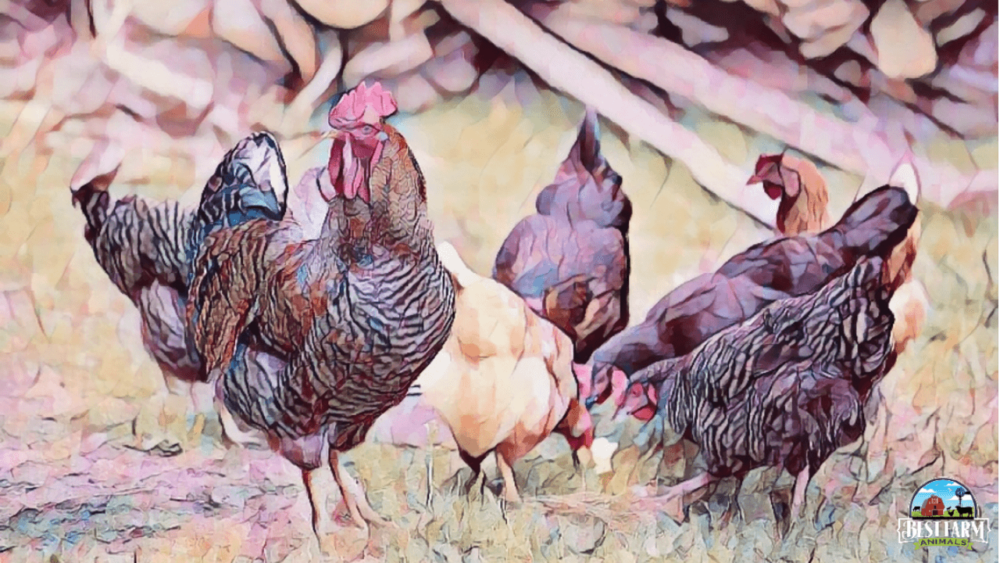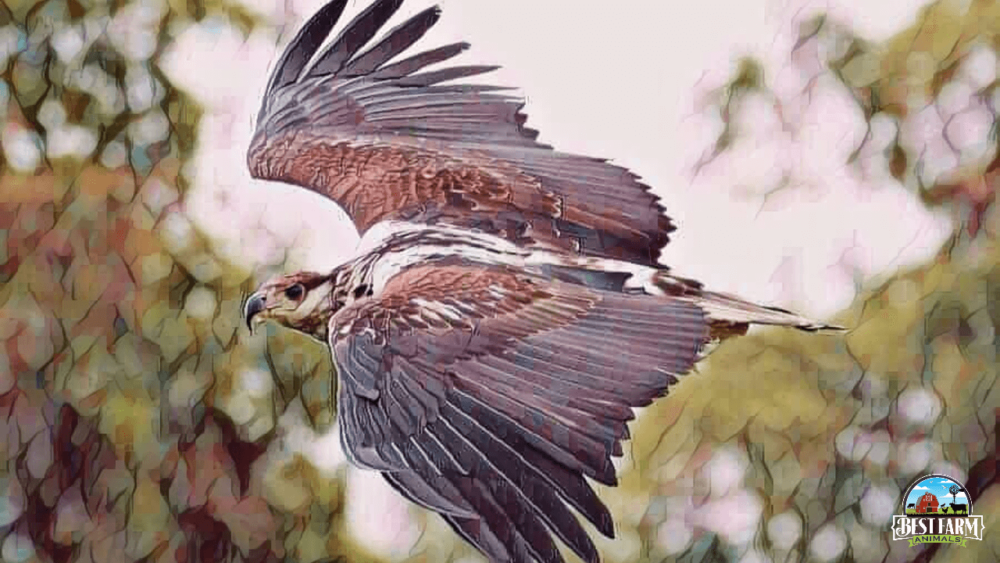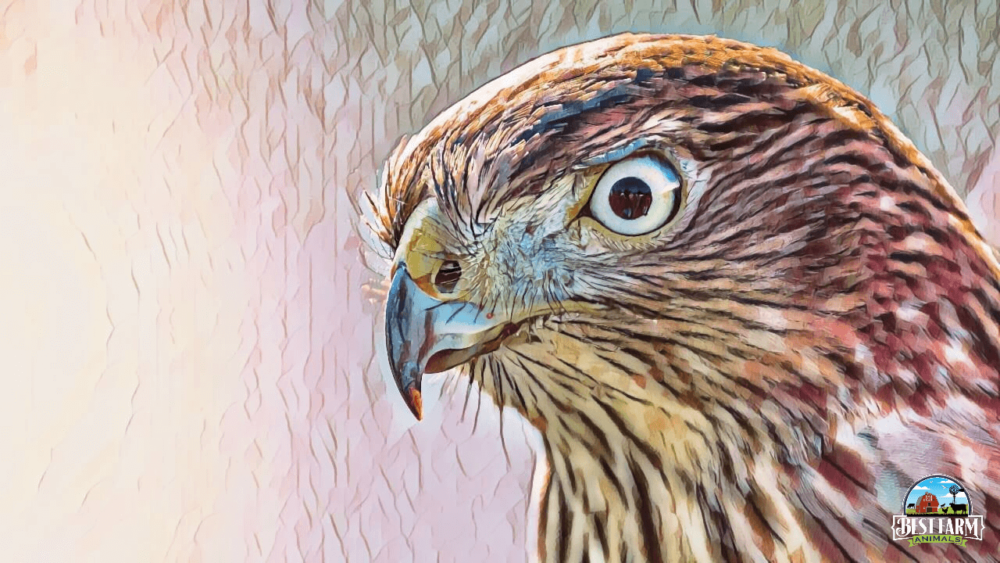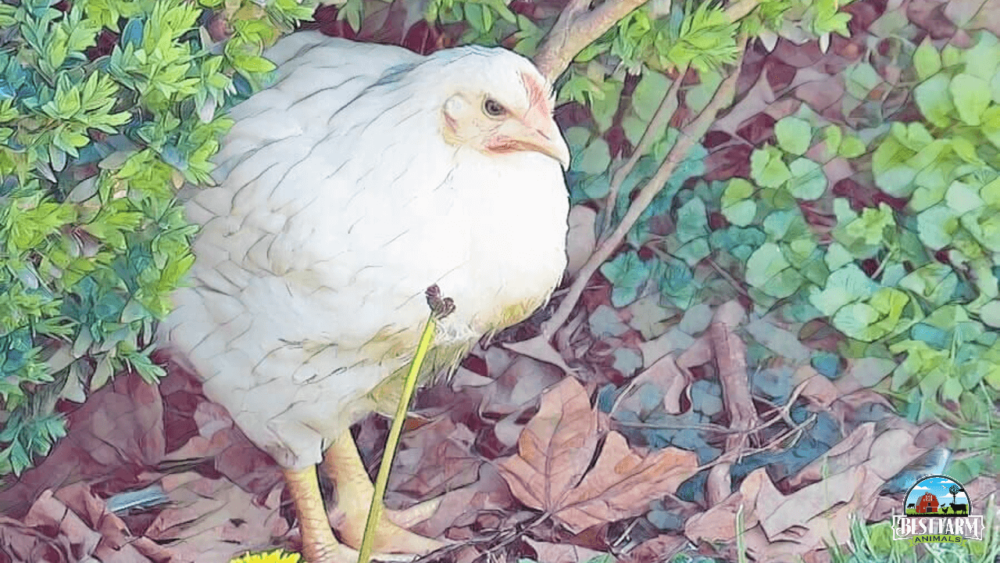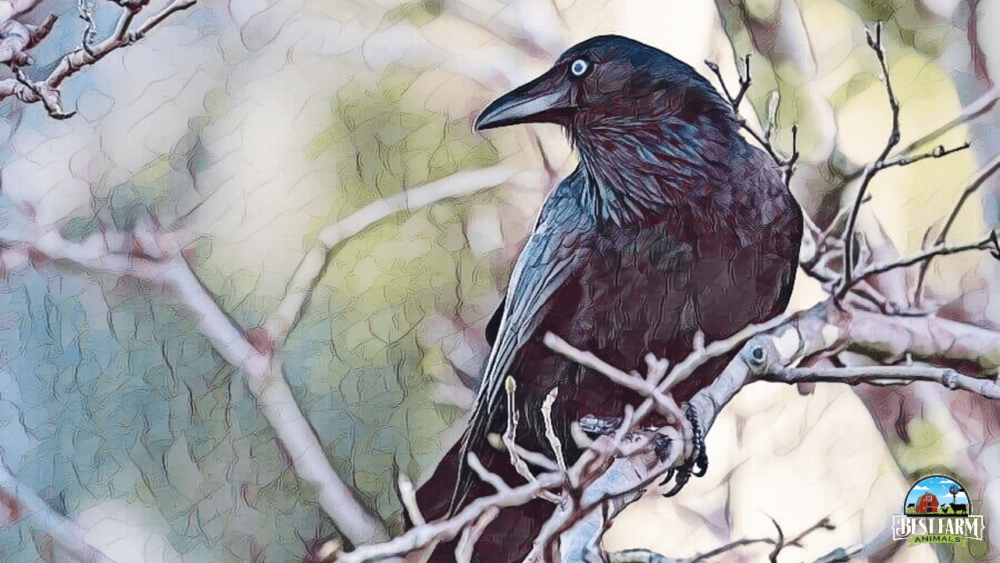Free-ranging chickens have many benefits, but it’s sad and frustrating when hawks, owls, or eagles kill or kidnap your chickens. At that moment, they become the enemy! Keeping your chickens safe from raptures and other predator birds is important if your chickens are free-range chickens.
How To Keep Hawks, Eagles, and Owls Away From Chickens: There are many ways to keep chickens safe from eagles, hawks and owls. The most effective method is to trick the birds of prey into uncertainty about the safety of swooping down for their meal. Hawks, owls, and eagles have high intelligence and this can be used against them through cunning to protect your chickens.
The raptor family includes hawks, owls and eagles. Raptors have the intelligence to monitor habits and differentiate changes. Throw a decoy outside and within a few days, you might see the hawk perched on top taking stock of your chickens. But change things up a little, and you throw him off balance. Unpredictability is the key.
1. Black Chickens Scare Hawks Away From The Flock (Super Effective!)
I have raised free-range chickens for 5 years, and I have an owl nest and a hawk nest in my backyard. The owl’s nest is just above the coop where my hens gather evenings. But, I have never lost a chicken to an owl.
This trick is the biggest secret in chicken keeping and will keep your hens safe from owls and hawks almost 100% of the time!
Protect your hens from owls and hawks by keeping at least 25% of your flock as pure-black breeds of chickens. Hawks and owls are afraid of crows, and seeing the black chickens, think they are crows. Black chickens will scare away owls and hawks without doing anything. Crows chase owls and hawks around and torment them endlessly.
Hawks and owls are scared of crows because crows have no fear of the larger birds and will endlessly torment both owls and hawks. Owls prefer to avoid a fight and will avoid a conflict even if it means skipping a chicken dinner. Hawks appear to be afraid of crows because of their endless torment and will often go around an area to avoid crows.
Australorp, Starlight, Black Orpington, Minorca, Silkie, Sumatra, Lanshan, or Swedish Black chicken breeds have all-black chickens that will scare away hawks from the flock. I have spent hours watching the owls above the chicken coop, watching the hens, then flying away to look for a meal elsewhere.
2. Light Chicken Breeds Are More Vulnerable to Raptures
Chickens of specific varieties and colors are more likely to be stolen or killed by a hawk or an eagle. Lighter-colored chickens look more like prey than darker ones. Light-colored chickens appear more vulnerable and more defenseless.
Remember that in nature, colors often communicate strength, poison, or other dangers to prey. Chickens that are darker in color may appear to hawks to be stronger. Plus, they blend in better to the surrounding ground. Light-colored chickens stand out and are more easily seen from the sky.
Smaller breeds of chickens are more vulnerable to rapture attacks. The size of your chicken affects how the raptors view them. Although there are many videos of eagles and hawks attacking animals much larger than them, they prefer to attach animals that are smaller, even if by a little.
A hawk that eying a flock of chickens for a meal understands that if he kills the largest chicken, he has to hang out to eat it. He isn’t concerned about failure. He’s concerned about having time to eat and whether or not other dangers will arise while he’s feasting.
- Will he have time to finish his meal?
- Will he lose some of his food?
Darker and larger chicken breeds are much less likely to be attached by either an owl, hawk or eagle. Silkie, white leghorn, Bantum, and Buff chickens are some of the most vulnerable breeds because of their coloring.
3. Chickens Are Most Vulnerable in Spring and Fall to Hawk Attacks
Three months a year, your chickens are more vulnerable to hawk attacks. Springtime, mother hawks and eagles have young to feed. They are more diligent about getting food for their young.
Early summer, in early to mid-June, baby hawks fledge. That’s when they leave the nest and start providing for themselves.
Just like humans, young hawks are usually more arrogant and aggressive than older hawks. They haven’t learned to discern danger as much. They are much more likely to take risks. This means that they will fly in an area that an older hawk will deem unsafe.
Scare tactics, shiny things, and even people are less likely to frighten a young hungry hawk. So it’s important to be aware that June and early July are the part of the summer when chickens are most at risk of getting eaten, especially by a chicken hawk.
The last time of the year they are the most vulnerable is the fall. In late August through September, hawks migrate south for food. Eagles also migrate in the fall.
If you live in an area that falls into the migratory path of raptors, then you will want to keep an eye out for migrating birds. When you notice an increase in hawks and eagles overhead, then consider locking your birds up for a few days while they pass over.
- More hungry mouths to feed in the early spring
- Young daring birds in June
- Migratory hawks in the fall
4. Mornings Are More Dangerous for Chickens
Owls tend to feed at night but are also active in the early evening and early morning hours. At this time, they are still up and searching for food. And hawks and eagles are usually hungry and looking for their daily meal in the morning.
Morning is the most dangerous time of the day for chickens to be attacked from raptors. (I’m not counting night as a time of the day- it’s dangerous from other predators)
Once the birds of prey have found something to eat, they tend to mellow down and are much less likely to attack in the afternoon.
You can be aware of this and ensure that you are out with your chickens if they are free-ranging during the morning or keep them locked up until later morning or afternoon.
5. String Fishing Line To Protect Free Range Chickens
Fishing line can be used to create a ceiling over your free-range chickens. String fishing line haphazardly across your yard or the area where the chickens are free-ranging. Cross it in a few directions. Although it is small and difficult for human eyes to see, hawks and eagles have incredible eyesight. They can see the fishing wire, even from their altitude. Hawks and eagles need space to swoop when they attack.
They have a difficult time attacking straight down. (Owls don’t have this problem.) The fishing line eliminates the space that hawks have to swoop. It provides an invisible cover over your chickens.
The fishing wire will have to be changed every couple of weeks or it will break down in the sun and will tangle on the ground.
6. Protect The Coop With Mesh
Owls can attach in an almost vertical attack. Plus they attack in the early evening to the early morning. That’s the time when even most free-range chickens are locked in their chicken coop for safety. Protect your chickens from owl attacks by covering their run with a mesh. The best netting is hardware cloth or orange netting, but it can be a variety of materials.
Orange mesh makes it easy for the birds to see the barrier and discourages them from coming. Hardware cloth is strong and won’t get torn from other predators’ sharp claws.
But, chicken wire, hardware cloth, and even fishing wire is effective in warding off owl attacks to the coop. Owls are not the only predators that can come from above, weasels, raccoons and other predators can often scale a coop fence to get in.
For that purpose, make sure that the covering is close enough together to keep out all the likely predators and not just one of them.
7. Good Roosters Protect Hens
A good rooster will die trying to protect the hens in the flock. I have lost 3 roosters to raccoon and coyote attacks at night. In two of those attacks, the hens were saved. In the third, the rooster and the hen were killed, but judging from the tracks in the snow, the hen was killed after the rooster died.
A good rooster is not afraid to give their life to protect them. A good rooster will scan the skies and the area around for danger.
If possible danger is spotted, he will search out a warning screech to gather the hens to a safe area. He will even stand guard over them until the danger has passed. Some roosters will attack anything that poses a danger to the girls. Roosters will even fight off hawks or eagles who attempt to snag a chicken.
The downside? Your rooster may feel protective of the chickens against you. Roosters can be aggressive to their human owners as they work to protect the hens.
8. Guard Animals Can Protect Chickens From Raptures
Guinea fowl, donkeys, alpacas or llamas, and dogs will protect chickens from owls, hawks, and eagles. Guinea Fowl are larger and much noisier birds that sound the alarm when danger arises. They may not fight an eagle to keep a chicken safe, but they will alert the hens early, causing them to scamper for safety. If you choose to use Guniea fowl to protect your flock, raise the guinea chicks with your pullets so they bond.
Donkeys, alpacas, and llamas often help to protect chickens from larger birds because of their larger size. Both donkeys and alpacas are generally mild-mannered animals. They aren’t aggressive to people and they tend to be fairly content. But a different side comes out when danger arises.
Donkeys and alpacas are great guard animals. They will protect more than just chickens. Goats, sheep and other smaller animals benefit from the protection that they provide.
While donkeys and alpacas generally don’t fight hawks, the larger animals are enough to keep the hawks at bay. Some dogs are great guard animals. Others become the predator. If you get a dog to protect your chickens, ensure you get one with the right temperament and training to protect chickens.
You should also get a large enough dog that the birds of prey don’t mistake it for dinner.
9. Shiny Objects Scare Away Hawks By Blinding Them
Eagles, owls and hawks have great eyesight, but even that can be confused by shinning, flickering light. Hawks can track movement and focus on two objects simultaneously. You can scare away a hawk by hanging CD’s up near trees, fence posts and stakes. The CDs will blow in the wind creating movement.
The light that reflects from CD’s, even at dusk, can travel a great length. If you ever used a mirror to reflect the light into someone’s eyes (as a kid of course) then you know that it can travel far. And, similar to the fishing string, light can confuse a raptor’s depth perception.
The temporary blinding effect that light has on birds combined with the motion of the objects, scare them away.
One word of warning though, you will want to move around your decoys because birds will get used to it. Hawks and eagles both have the ability to learn that those objects are not dangerous and to fly around it.
10. Moving Scarecrows Imitate People
In The Wizard Of Oz, the scarecrow is the cool place for crows to hang out. Scarecrows are seldom effective when left in a field unless they are used properly.
In order for a scarecrow to work, it needs to have moving parts. This can be accomplished through arms that adjust and streamers attached to the arms. The streamers move, and the arms can be adjusted from daily.
You will need to move scarecrows on a daily or semi-daily basis. It needs to be moved around and placed in different parts of the yard. Otherwise, hawks will catch on that it’s not real and will ignore it. Other raptors will do the same. It must remain unpredictable.
11. Owls Decoys Scare Owls Away
Hawks and owls hate other owls and will avoid an area with an owl. Use an owl decoy to keep hawks and owls away from your chickens. Move the decoy every 1-2 days so the hawks don’t realize that the decoy isn’t alive.
Beat the big birds at their own games by using bird decoys to scare them away. An owl decoy or several crow decoys set around the yard can keep the hawks and owls away.
I’m not sure it will work with eagles, but if you have any experience, I’d love to know about it!
You will need to move the decoys every day or every other day. Hawks can learn patterns quickly and will notice that their sworn enemy isn’t moving from each day. It will be much more effective if you move the owls and crows around.
- Crows scare hawks
- Owls scare hawks
- Owls hate other owls
12. Provide Bushes As Cover
Free-range chickens need a place to shelter under if danger comes. An open field is the worst place for them to be because of how vulnerable they will be.
Plant trees, bushes, and other ground covers as protection to your birds. This provides a safe place where they can be unseen. It provides branches and leaves that can get in the way of an attaching raptor.
13. Switch It Up And Create Uncertainty
Bank employees are supposed to drive to work using different routes. Their arrival times should vary. That’s because it creates uncertainty if someone is casing the bank to rob it. The same strategy can be used against Hawks.
Raptors are very intelligent birds that can learn patterns. If you are usually outside in the morning, they will learn to stay away. If you regularly go inside in the early afternoon, they learn that’s a safe time to come by.
They will also learn what time your chickens are loosed for the day and when your dog is out.
Switch up the routine to keep them guessing and on their toes. It makes it harder for them to guess what the plan is.
- Bird of Prey learn patterns quickly
14. Use A Dummy Chicken
I have never personally tried this method, but it sounds fascinating. Its purpose is to trick a bird of prey that chickens are not desirable to eat.
You take a gunny sack and fill it with fabric, sacks and the like. Glue enough feathers on it to make it look like a chicken. Place it down by the owl. When the owl tries to eat it, he finds that it doesn’t taste good.
I think that the biggest obstacle with this method is the time it would take to train the raptures. If there is one rapture in the area, there’s probably several. Many hawks, owls, and eagles regularly fly over my property and live nearby. In order to train them that chickens are undesirable meals, I’d have to keep up this method for a while in the hopes of training each of the birds.
15. Eliminate Perches Near Your Chickens
Hawk perches, not chicken perches, put chickens at risk. An owl perch might be a dead tree branch on a live tree or tall stake. You can eliminate these perches by cutting down dead branches.
Add spikes to posts and other perching places in your property. Or use an Oscillating fence attachment. This will eliminate the ability for hawks and owls to move in closer and perch, while watching your flock.
Of course, I love watching the owls and hawks that roost and nest on my property. That’s why I use tip #1 to keep them away from my chickens. It lets me observe the majestic birds of prey in my area while keeping my flock safe.
16. Lock Up Your Chickens
As a last resort, you can lock up your chickens to keep them safe. This keeps your chickens from being free-range chickens but keeps them safe in an enclosed structure.
I’ve struggled with locking up my hens during the day because the benefits of free-range chickens are so great! But, if you have a big issue with birds of prey eating your chickens, locking them up for a few weeks can keep hens safe and encourage raptures to look elsewhere and form new hunting habits.
How Do Hawks, Eagles, and Owls Attack Chickens?
Hawks generally kill their prey by gripping it with their strong talons. They puncture the vital organs and the animal dies slowly. Hawks will also attack for an on-site feast. They aren’t as large as some of the other birds and will kill an animal and stay to eat it, especially if it is more than 4 or 5 pounds. That’s the maximum weight that most hawks can carry away.
Owls tend to attack smaller animals than hawks and eagles attack. They tend to ambush their prey and have feet designed to hold struggling prey. Their toes are stronger and shorter than other raptors. They have opposing toes that make their grip more powerful.
Eagles are strong and large enough that they don’t stop to capture prey. They swoop down and capture the animal in mid-flight. They will then take the live, and sometimes uninjured animal into flight. Their talons grip the animal and often suffocate it to death before the eagle arrives at the nest.
What Kind Of Hawks Kill Chickens?
Any hawk can kill a chicken, especially if it’s hungry. However, three species of hawks have earned themselves the name of chicken hawks. Those species are Red-tailed, Cooper’s and Sharp-shinned hawks.
Red-tailed Hawks are one of the larger hawk species. It has a large wingspan and usually circles around the prey before attacking. They dive slowly and meticulously.
A Cooper’s Hawk is a medium-sized hawk that glides to capture prey. It often glides low to the ground and then can come up and over a fence to surprise prey on the other side. It is fast and agile in flight.
The Sharp-shinned Hawk is the smallest in the hawk family. They fly easily through trees and navigate around branches. They breed in the woods and hunt along the edges of the forests. They usually attack from a low perch.
Can I Kill A Hawk That Is Killing My Chickens?
Even when a hawk kills chickens, it cannot be killed or harmed. Eagles, hawks, and owls are all protected under the Migratory Bird Treaty Act of 1918. In the United States, it is illegal to trap, harm, hunt, shoot, cage, or poison them. Doing so can bring imprisonment, massive fines, and a misdemeanor.
Raptors are majestic birds. They help to keep other predator populations at bay and in balance. They are an indicator of a healthy ecology.
Instead, try several of the prevention tactics mentioned in this article to keep your chickens safe.
When Do Hawks Hunt Chickens?
Mornings are the most common time of the day when hawks hunt chickens. They are usually famished after the night’s fast and looking for a meal. If the hawk cannot capture prey for the day, they will still be looking for a meal later in the day, but that is less common.
Usually, by midday, hawks have found sufficient food for the day. A hawk can eat an entire bird every day.
Will Hawks Eat Fully Grown Chickens?
Hawks will eat a full-sized chicken. Grown chickens are not usually small enough for a hawk to carry away. Instead, the hawk will attack it, usually hitting it and breaking its legs or other bones. The hawk will then stay and eat the meal on the ground.
Related Articles
What is the Best Animal to Protect Chickens?
Protect Your Chickens From Hawks Without Great Expense
One Legged Chickens: Survival Rate, Diagnosis, & Treatment Part 1 of 3
My Favorite Chicken and Duck Supplies
This list contains affiliate products. Affiliate products do not cost more but helps to support BestFarmAnimals and our goal to provide farm animal owners with accurate and helpful information.
Manna Pro Oyster Shell keeps eggs strong. Before I gave my chickens oyster shell, I had the oddest eggs, many with weak and irregular shells. Now, I don’t have an issue.
Layer Feed by Manna Pro. I like pellets rather than crumbles as my chickens eat them better and less gets wasted or scavenged by rodents. A good layer feed makes the difference in hens laying many more eggs.
My chickens love this mealworm treat, which gives added protein, something that’s great during molting and winter months.
There are many ways to feed and water your chickens. I like this food and water setup the best because it reduces waste, saves me time feeding and watering, and keeps the food fresh longer. Except, in the winter, I use a heated waterer. The only problem is the heated waterers need to be replaced every few years.
I love this chicken veggie hanger. It makes it easy to give your chickens produce from the garden and keep them occupied in the winter with a fresh head of lettuce.
These chicken toys are a hoot! They will help curb bullying and keep your chickens active, especially in the winter when hens tend to get more lethargic.


